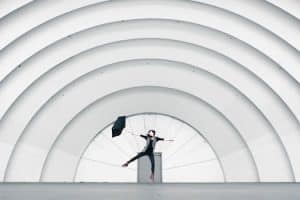The Art of Draping: Understanding Fabric Flow
Welcome to the world of draping, where fabric is transformed into an art form. Draping is a technique used by fashion designers to create a garment directly on a dress form, rather than using a pre-made pattern. It allows for creativity, experimentation, and a deeper understanding of how fabric behaves. The key to mastering the art of draping lies in understanding fabric flow. In this article, we’ll delve into the intricacies of draping and explore how fabric flow plays a crucial role in this creative process.
The Basics of Draping
Before we dive into the specifics of fabric flow, let’s first understand the basics of draping. As mentioned earlier, draping is a technique used in fashion design where fabric is shaped, pinned, and marked directly on the dress form to create a garment. Unlike traditional flat pattern making, draping allows for more fluidity and spontaneity in the design process.
The process of draping involves three key steps – preparing the dress form, draping the fabric, and transferring the draped fabric onto a paper pattern. The dress form used in draping is typically a life-size representation of the human body, allowing the designer to see how the garment will look on a real person. The fabric is then draped and pinned onto the dress form, creating the desired shape and silhouette. Finally, the draped fabric is marked and transferred onto a paper pattern, which can then be used for cutting and sewing.
Understanding Fabric Flow
When it comes to draping, fabric flow is a vital concept that every designer must understand. Fabric flow refers to how a fabric moves, falls, and behaves when draped on a body or dress form. It is affected by factors such as the weight, drape, and weave of the fabric. Understanding fabric flow allows a designer to work with the fabric’s natural characteristics, rather than against them, resulting in a well-fitted and aesthetically pleasing garment.
One of the key aspects of fabric flow is the direction of the fabric’s grain. The grain refers to the direction of the threads in a woven fabric. There are three types of grain – the lengthwise grain, crosswise grain, and bias grain. The lengthwise grain runs parallel to the selvage (the finished edges of the fabric), while the crosswise grain runs perpendicular to the selvage. The bias grain runs diagonally between the lengthwise and crosswise grains. The direction in which the fabric is draped on the dress form determines which grain is used, and this has a significant impact on the fabric’s flow.
The Role of Gravity
Gravity plays a crucial role in the draping process, as it determines how the fabric falls and moves. The heavier the fabric, the more it will pull downwards, creating a different flow compared to a lighter fabric. This is where the concept of fabric weight and drape comes into play. Fabric weight refers to how heavy or light a fabric is, while fabric drape refers to how fluid and pliable it is. A lightweight fabric with a soft, flowing drape will behave very differently from a heavy, stiff fabric, and it’s essential to consider this when draping.
Consider the Grainline
Another crucial aspect to consider when draping is the fabric’s grainline. The angular direction in which the threads in a fabric run determines its grainline. When draping, it’s essential to follow the grainline and allow the fabric to fall naturally in its desired direction. If the grainline is not followed, the finished garment may not hang correctly, resulting in an unflattering fit.
Incorporating Fabric Flow into the Design Process
Fabric flow not only affects the fit and drape of a garment, but it also plays a significant role in the aesthetic aspect of a design. It can create movement, add dimension, and enhance the overall look of the garment. As a designer, it’s essential to consider fabric flow during all stages of the design process – from concept development to construction. Here are some tips to incorporate fabric flow into your design:
Experiment and Play
Don’t be afraid to experiment with different fabrics and draping techniques to find the perfect flow for your design. Play around with different weights, drape, and grainlines to see how they affect the overall look of the garment. This will help you develop a better understanding of fabric flow and how to use it to your advantage.
Work with the Fabric
One of the key principles of draping is to let the fabric do the work. Instead of trying to mold the fabric into a particular shape, allow it to fall and create its own flow. By working with the fabric, you’ll achieve a more natural and effortless look.
Consider the Garment’s Purpose
The type of garment you’re creating will also influence the fabric flow. For example, a flowy maxi dress will require a different type of fabric and flow compared to a structured blazer. Consider the purpose and style of the garment when choosing and draping the fabric.
Final Thoughts
The art of draping goes beyond creating beautiful garments – it’s about understanding fabric and how it moves. By mastering the concept of fabric flow, a designer can create unique and visually striking designs that are not only aesthetically pleasing but also fit perfectly. So the next time you see a beautifully draped gown or a tailored blazer, remember the vital role fabric flow played in bringing that design to life.








